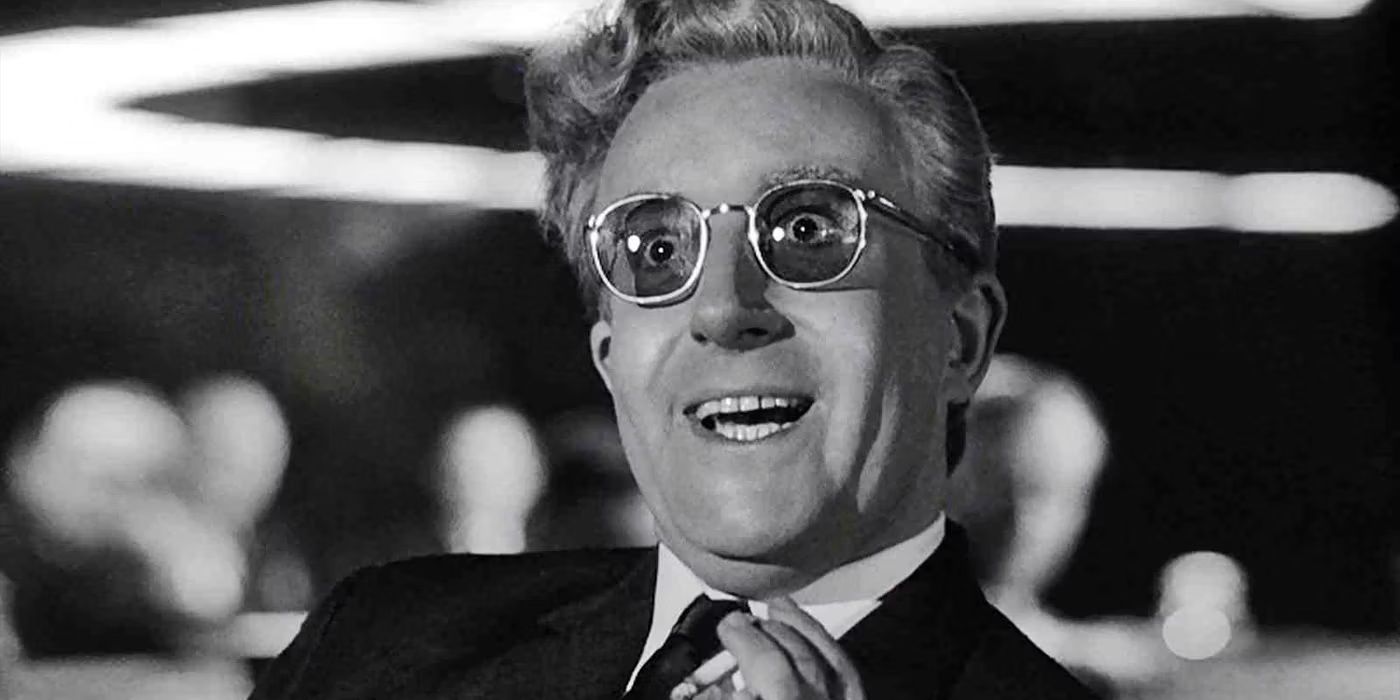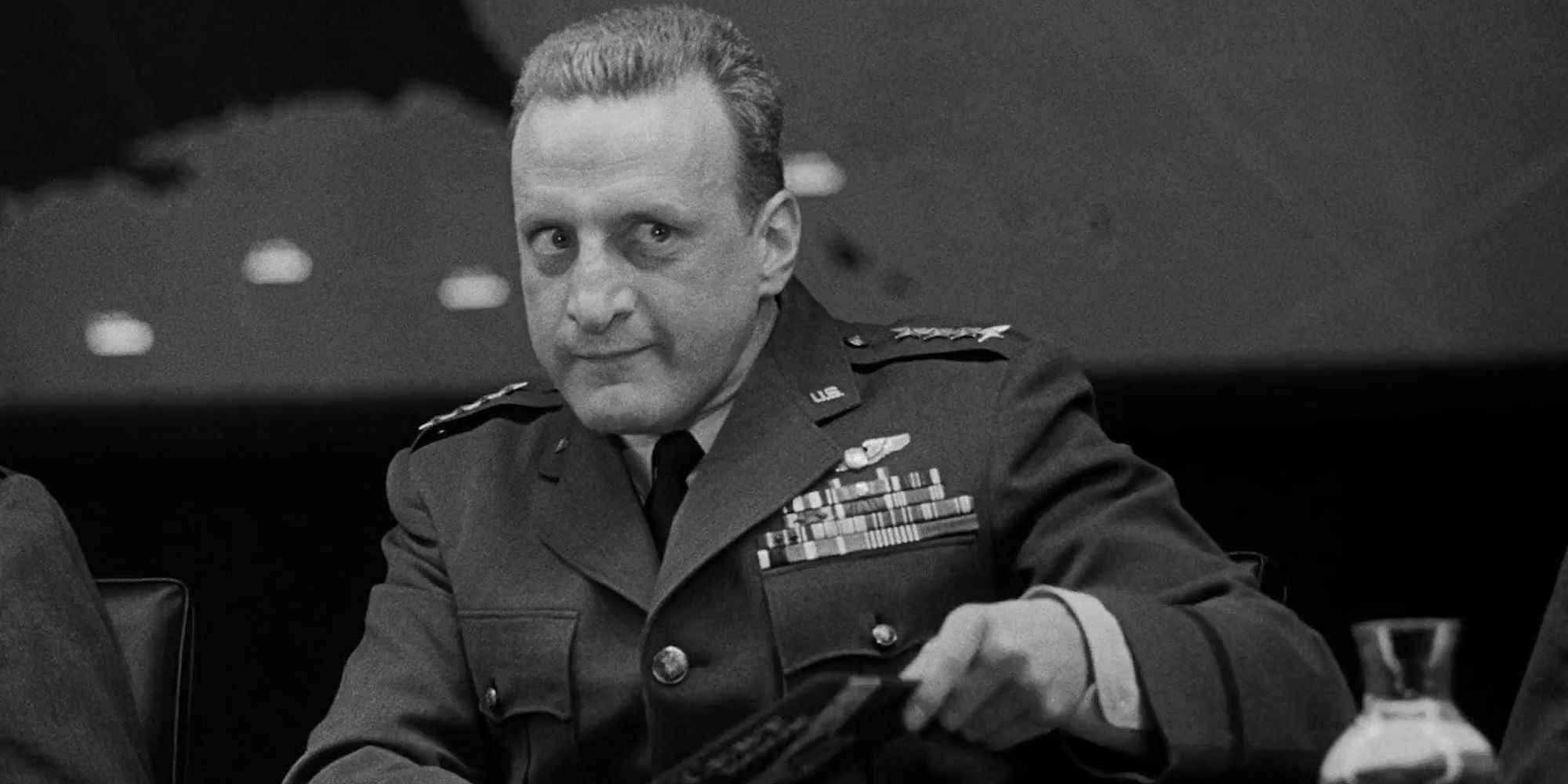The Big Picture
- Stanley Kubrick initially set out to make a serious and grim film about the Cold War, but found the material outrageous and filled with buffoonery.
- Many of Dr. Strangelove's characters are based on real people that Kubrick encountered while researching for the film.
- The dialogue and eventualities of nuclear war depicted in Dr. Strangelove are based on actual documents and statistics drawn up by Herman Kahn, a real-life nuclear strategist.
It's impossible to picture the 1964 Stanley Kubrick masterpiece Dr. Strangelove: How I Learned to Stop Worrying and Love the Bomb as anything but the biting piece of Cold War satire that changed the course of cinema. When Major "King" Kong, (Slim Pickens) rides that atomic bomb named "Hi There!" like a bucking bronco as it drops from the B-52, it's the cherry on top of what may be the most meaningful movie that the great filmmaker ever made. This made it even more fascinating to discover that Kubrick initially had designs on making a serious and grim picture at the very height of the conflict between the United States and the Soviet Union, based on the very serious and frightful book Red Alert by Peter George. He was poised to follow up his harrowing and heroic prior projects – Paths of Glory and Spartacus – with a titillating thriller about the out-of-control proliferation of nuclear arms between two superpowers that seemed ready to annihilate civilization. But when he committed himself to the research for such a film, he found the material so incredibly outrageous and laced with buffoonery, that he had no choice but to make the biting satire that altered the course of movie-making on a grand scale.
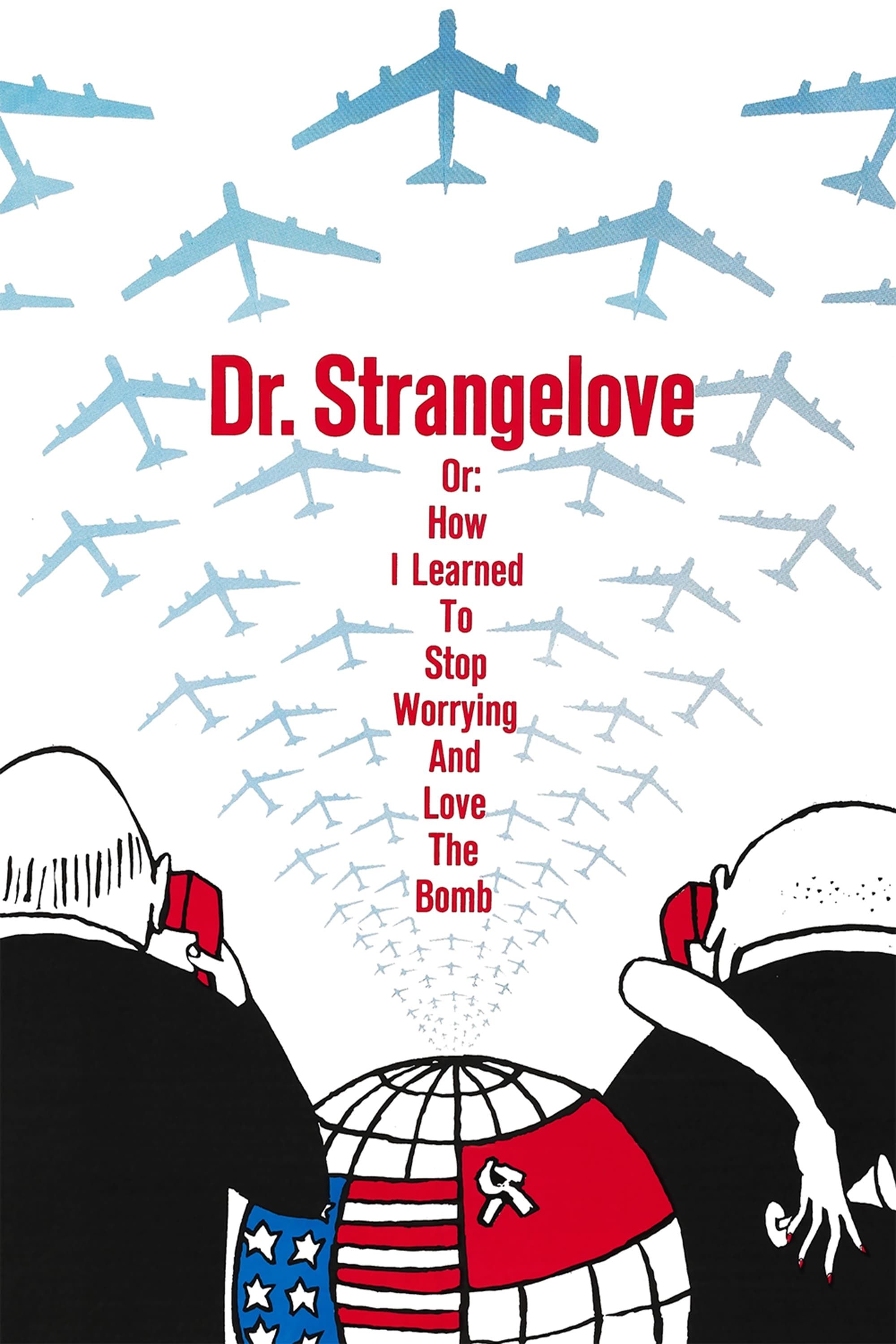
Dr. Strangelove Or: How I Learned To Stop Worrying And Love The Bomb (1964)
Stanley Kubrick's 1964 black-and-white satire Dr. Strangelove or: How I Learned to Stop Worrying and Love the Bomb parodies the growing tensions between the United States and the Soviet Union during the Cold War. Starring Peter Sellers, the plot revolves around a US Air Force general who orders a nuclear attack on the Soviet Union against the wishes of the government.
- Release Date
- January 29, 1964
- Director
- Stanley Kubrick
- Cast
- Peter Sellers , George C. Scott , Sterling Hayden , Keenan Wynn , Slim Pickens , Tracy Reed
- Runtime
- 95 minutes
- Main Genre
- Comedy
- Writers
- Stanley Kubrick , Terry Southern , Peter George
- Studio
- Columbia Pictures
Stanley Kubrick Was Known For Serious, Grim Movies When Making 'Dr. Strangelove'
Still a very young director, Kubrick was coming off two critically lauded and successful collaborations with Kirk Douglas that were both serious, dramatic pieces. Paths of Glory is well-known as an anti-war movie about the leader of a French battalion that refuses to continue with what they consider to be a suicidal mission. It is just about as real and jarring as movies got in the late 50s and established Kubrick as a serious auteur sharpening his bona fides in dramatic storytelling. Spartacus is a legendary work that landed in his lap as he replaced the original director Anthony Mann two weeks into the shoot. The Dalton Trumbo adapted tale of the leader of a slave rebellion in ancient Rome further cemented him as a director who wanted to make serious movies that would change the way we think about a movie's characters. So when he read George's novel Red Alert, he was prepared to continue on the trajectory that he had established early in his career. But when he began researching for Dr. Strangelove by reading dozens of books and articles and interviewing real-life people close to the dire Cold War scenario, the truth was far more laughable and darkly absurd than psychologically haunting. The audience lucked out when he decided to do a one-eighty and give us the game-changing film that he delivered.
Who Did Kubrick Base His Characters in 'Dr. Strangelove' On?
There are so many hilarious and memorable characters in Dr. Strangelove (three are portrayed by the great Peter Sellers). For anyone wondering if these outlandish buffoons couldn't be based on real people, several of them are. In fact, Fred Kaplan wrote a detailed piece covering how the director came across the real people that he so earnestly chastises in the film. Kaplan writes of meeting General, Curtis LeMay, who would be the archetype for the demented General Jack D. Ripper, played so brilliantly by Sterling Hayden. The tandem of him and Group Captain Lionel Mandrake (Sellers' most dynamic of his trio of roles) team up for some of the most surreal and bizarre scenes in the film. Ripper and Mandrake even share some of the best dialogue in the film.
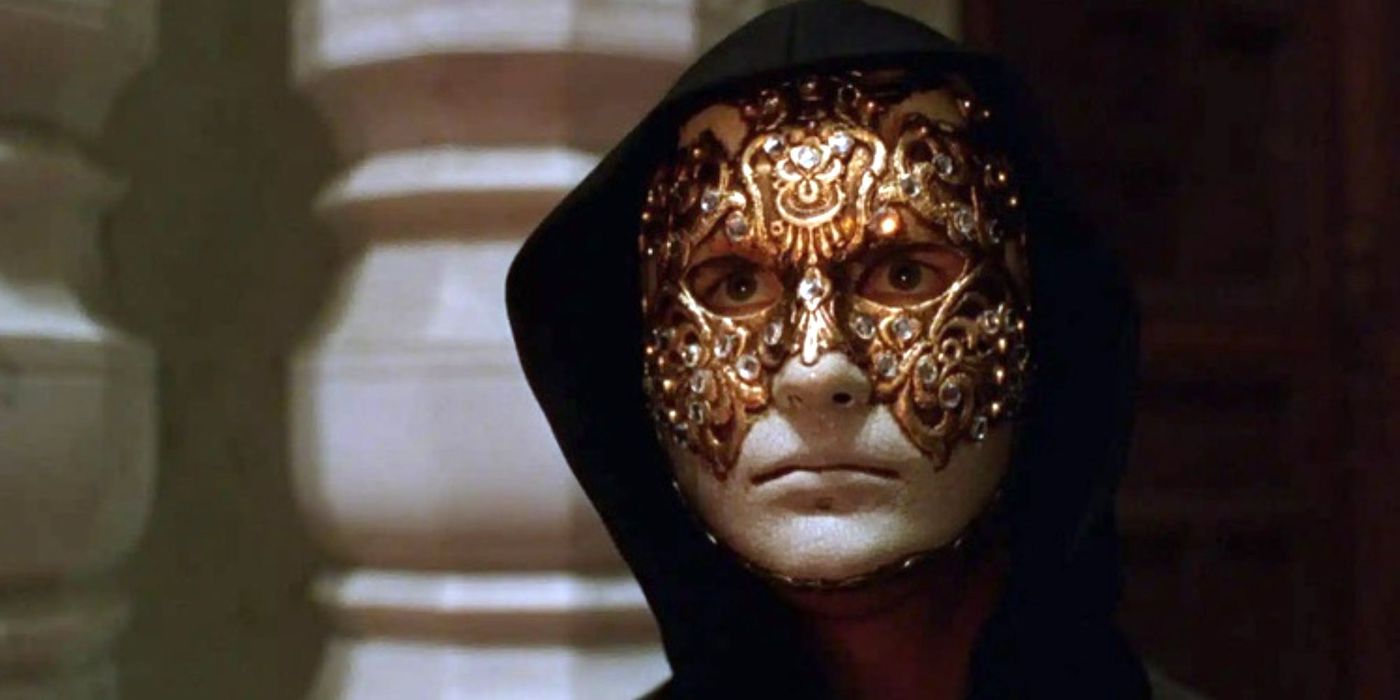
Making Stanley Kubrick's 'Eyes Wide Shut' Was a Real-Life Nightmare
Of all Stanley Kubrick's difficult productions, his last film was the most difficult to make.Kaplan further states, "It was no secret – it would have been obvious to many viewers in 1964 – that General Ripper looked a lot like Curtis LeMay, the cigar-chomping, gruff-talking general who headed the Strategic Air Command through the 1950s and who served as the Pentagon's Air Force Chief of Staff in the early 60s." Yes, the man who denied all communists and women his "precious bodily fluids" is based on an actual military-lifer from the era.
Dr. Strangelove Is Also Based on a Real-Life Person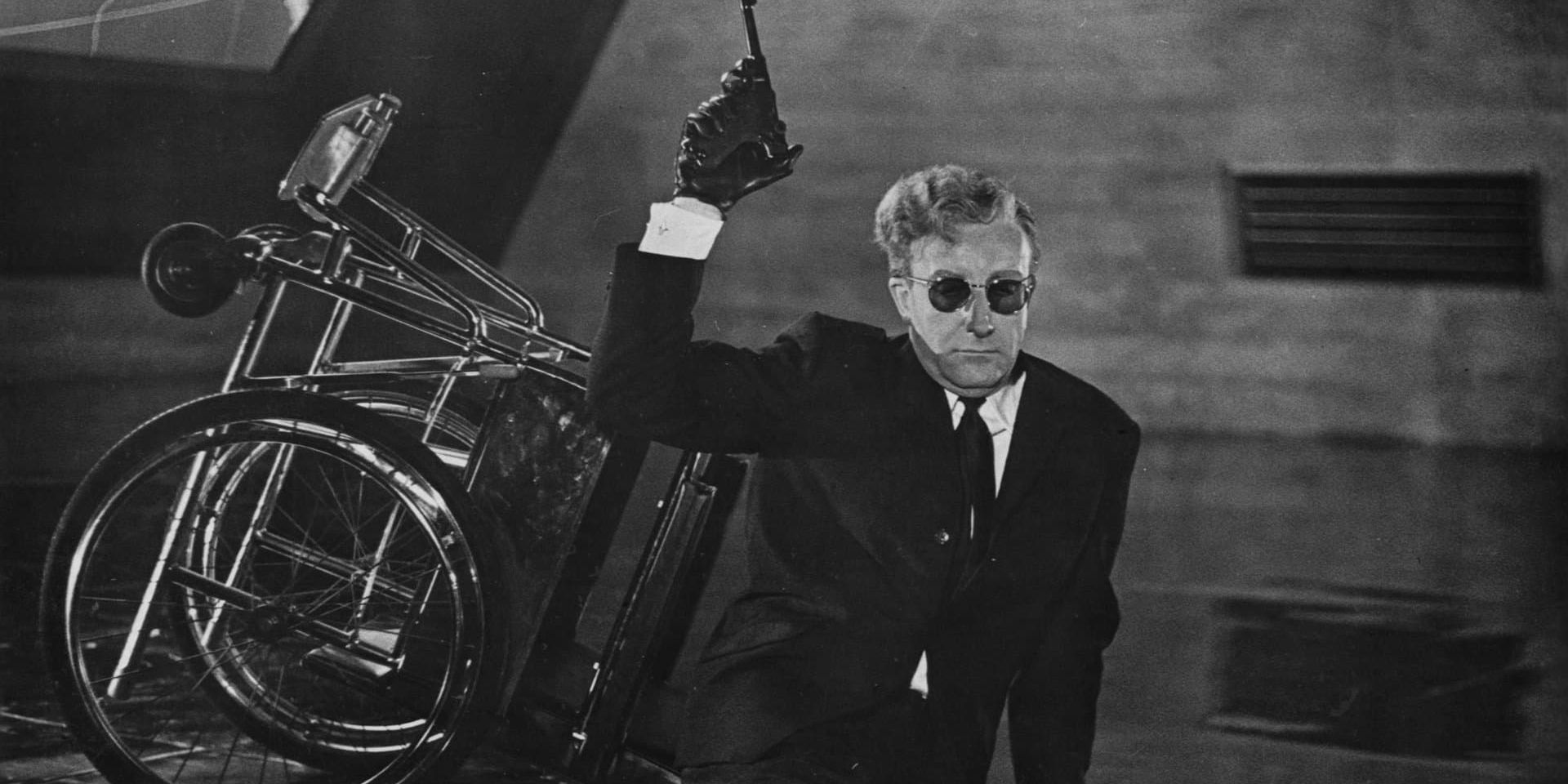
The titular, wheelchair-using, Nazi nuclear scientist who has an embarrassing and awkward tendency to shout out his pro-fascist political leanings is also based on a person that Kubrick came across while researching Dr. Strangelove. He is a send-up of a real German physicist and strategist named Herman Kahn, as Kaplan details in his article, "But the real model was almost certainly Herman Kahn, an eccentric, voluble nuclear strategist at the RAND Corporation, a prominent Air Force think tank. In 1960, Mr. Kahn published a 652-page tome called On Thermonuclear War, which sold 30,000 copies in hardcover." Kubrick read the book several times and used it as a blueprint for another key, over-the-top character in the movie, General "Buck" Turgidson played by the bombastic and powerful George C. Scott.
The Real Eventualities of Nuclear War in ‘Dr. Strangelove’
The unforgettable scene showing General Buck Turgidson making his case to allow the rogue B-52 bomber to carry out its misguided and unintended nuclear strike on Russia is based on actual documents and statistics that were drawn up by Kahn. The cartoonish loose cannon, Turgidson, tells President Merkin Muffley (Sellers once again), "Such a strike would destroy 90 percent of the U.S.S.R.'s nuclear arsenal. "Mr. President," he continues, "I'm not saying we wouldn't get our hair mussed, but I do say no more than 10-20 million killed, tops!" Turgidson further argues that if they "don't go all-out, the Soviets will fire back with all their nuclear weapons." Turgidson rationalizes "between two admittedly regrettable but distinguishable postwar environments – one where you get 20 million people killed and the other where you get 150 million people killed!" Mr. Kahn made precisely this point in his book, even producing a chart labeled, "Tragic but Distinguishable Postwar States." This dialogue is based on Kahn's research and is used in the movie. The seemingly outrageous and incredulous statements made in Dr. Strangelove are not conjured by Kubrick, but based on actual documented eventualities that existed at the time.
The Final Scenes of Dr. Strangelove Are Almost Direct Musings of Herman Kahn
In the final scenes of Dr. Strangelove Sellers' Muffley worries about Strangelove's plan to send a calculated cross-section of the human race into mine shafts to wait out the nuclear winter and start life anew after the world ends. President Muffley asks him, "Wouldn't this nucleus of survivors be so grief-stricken and anguished that they'd, well, envy the dead?" Strangelove proclaims the opposite, saying they would have "a spirit of bold curiosity for the adventure ahead." There is a detailed and very long chapter in Kahn's thesis on the mineshafts dilemma called, "Will the Survivors Envy the Dead?" Kubrick uncharacteristically leaves us with a beacon of hope as Strangelove says, "We can imagine a renewed vigor among the population with a zealous, almost religious dedication to reconstruction."
Kahn's work On Thermonuclear War became the framework for one of the greatest satires ever captured on film. The movie was an extraordinary outlier in 1964, and its eccentric beauty has only grown in the 60 years that have followed. And despite what Kubrick claims in the prologue rolling credits, these characters are very much based on real people, "living or dead".
Dr. Strangelove is available to rent or buy on Prime Video in the U.S.

